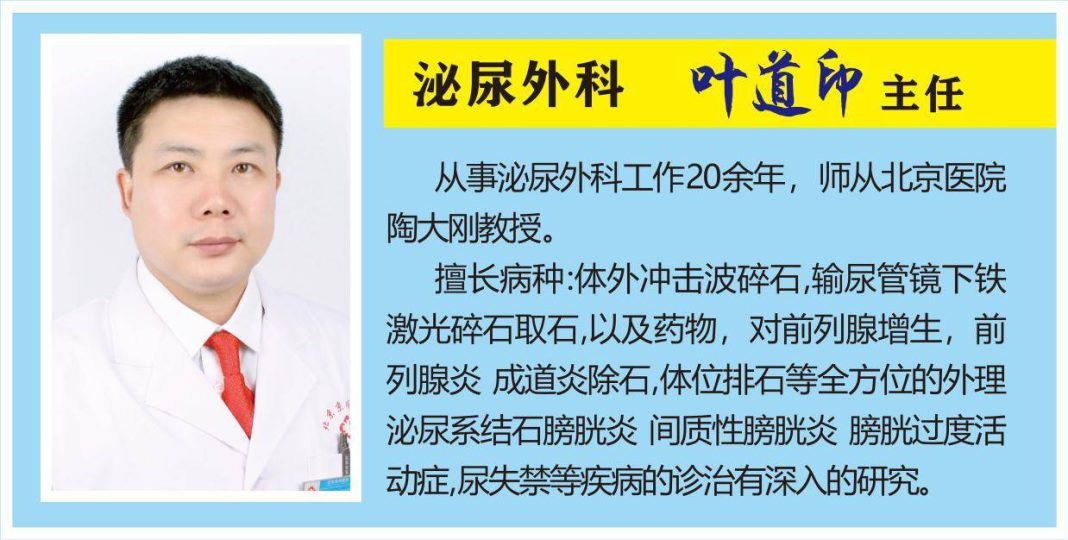“Self-reliance leads to abundance.” The Chinese, with their excellent traditions, always prefer to do things themselves. This includes male friends performing circumcisions. At the urology outpatient clinic, there are many patients who have encountered serious problems after attempting to perform circumcisions on their own. Some men feel that going to the hospital is too much trouble, so they purchase circumcision devices online to do it themselves. Director Ye Dao-yin from Jingshun Urology reminds: it’s best to leave professional tasks to professionals; performing circumcision on your own is absolutely inadvisable.
Currently, some circumcision and suturing devices may have short operating procedures and can eliminate the need for suturing, but there are many small details during usage; the dressing of the wound after cutting also requires attention. These are basic operations for clinical urology doctors, but ordinary people find it difficult to grasp these details. Improper handling could lead to severe bleeding, wound opening, and other significant issues. Once an adult’s foreskin is cut, it cannot regenerate; if the circumcision is poorly performed, a short foreskin may affect erection, making treatment very difficult. This situation requires collaboration between urology and plastic surgery doctors to repair the foreskin, significantly increasing the patient’s injury and costs.
Is it necessary for men to have their foreskin removed? Director Ye Dao-yin pointed out that the functions of the foreskin and related diseases differ between adults and children; thus, circumcision cannot be generalized.
For children, the foreskin has a protective function for the glans. As they grow older, the opening of the foreskin will gradually widen after the age of three, and the foreskin will retract. By the ages of 11 and 12, most problems of excessive foreskin or phimosis can typically resolve naturally, usually without excessive intervention. However, some children may have an extremely narrow foreskin opening, as small as a pinhole, leading to recurrent balanitis, difficulty urinating, pain in the glans, and even the risk of retrograde pyelonephritis; in such cases, treatment is necessary. Children who still have phimosis at age 11 should undergo circumcision as soon as possible. There is also a condition known as “hidden phimosis,” where the foreskin is particularly short, making it possible to only see the foreskin opening, which may affect development and should be checked as soon as possible.
For adults, patients with phimosis must have their foreskin removed because phimosis is a high-risk factor for penile cancer. However, for those with excessive foreskin, the severity must be assessed, such as whether recurrent balanitis occurs, whether there is a tendency for the foreskin to become trapped, whether there are accompanying narrow openings, urinary tract infections, or the risks of sexually transmitted diseases and diabetes. Only after comprehensive evaluation should a decision be made regarding surgery. It should not be generalized to perform circumcision, nor should phimosis be confused with excessive foreskin.
Circumcision surgery in elderly men is relatively more common compared to middle-aged and young adults. Elderly males often experience narrowing of the foreskin due to diabetes, compounded by prostatic hyperplasia causing urinary difficulties; in such cases, removing part of the foreskin can facilitate urination. Additionally, some elderly people may have significant odors and frequent inflammation due to urinary incontinence, and removing part of the foreskin can promote hygiene. Since elderly individuals have decreased erectile function, recovery after surgery is relatively quick; therefore, foreskin surgery in elderly patients is more commonly observed compared to other age groups.
Jingshun Urology introduced an advanced one-time-use circumcision cutting and suturing device, which has many significant advantages: the operation process is simple and fast, safety is high, and efficiency is excellent; it can simultaneously complete cutting and suturing, making the surgical outcome more aesthetically pleasing; patients can leave immediately after the surgery without needing hospitalization or suture removal. Because of these reasons, this technology has gained high favor among most patients.


